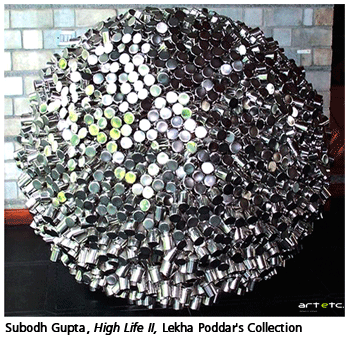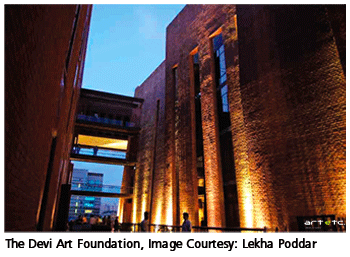- Publisher's Note
- Editorial
- Guerrilla Girls: The Masked Culture Jammers of the Art World
- Creating for Change: Creative Transformations in Willie Bester’s Art
- Radioactivists -The Mass Protest Through the Lens
- Broot Force
- Reza Aramesh: Action X, Denouncing!
- Revisiting Art Against Terrorism
- Outlining the Language of Dissent
- In the Summer of 1947
- Mapping the Conscience...
- 40s and Now: The Legacy of Protest in the Art of Bengal
- Two Poems
- The 'Best' Beast
- May 1968
- Transgressive Art as a Form of Protest
- Protest Art in China
- Provoke and Provoked: Ai Weiwei
- Personalities and Protest Art
- Occupy, Decolonize, Liberate, Unoccupy: Day 187
- Art Cries Out: The Website and Implications of Protest Art Across the World
- Reflections in the Magic Mirror: Andy Warhol and the American Dream
- Helmut Herzfeld: Photomontage Speaking the Language of Protests!
- When Protest Erupts into Imagery
- Ramkinkar Baij: An Indian Modernist from Bengal Revisited
- Searching and Finding Newer Frontiers
- Violence-Double Spread: From Private to the Public to the 'Life Systems'
- The Virasat-e-Khalsa: An Experiential Space
- Emile Gallé and Art Nouveau Glass
- Lekha Poddar: The Lady of the Arts
- CrossOver: Indo-Bangladesh Artists' Residency & Exhibition
- Interpreting Tagore
- Fu Baoshi Retrospective at The Metropolitan Museum of Art
- Random Strokes
- Sense and Sensibility
- Dragons Versus Snow Leopards
- What Happened and What's Forthcoming
- Art Events Kolkata, February – March 2012
- Mumbai Art Sighting
- Art Bengaluru
- Delhi Dias
- Musings from Chennai
- Preview, March, 2012 – April, 2012
- In the News, March 2012
- Cover
ART news & views
Lekha Poddar: The Lady of the Arts
Issue No: 27 Month: 4 Year: 2012
Based on a conversation between Frank Barthelemy with the Lekha Poddar at the occasion of the India Art Fair 2011
by Franck Barthelemy
 While waiting for Lekha Poddar at her Sunder Nagar HQ, I thought I was waiting for a museum director. The sitting room, beyond being decorated with good unconventional taste, is filled with art works charged with historical value: Chola stone statues, delicate antique Indian fabrics, paintings and a wall covered with books. All of this placed under the protection of a 10 feet tall wooden Buddha, perhaps from Burma. The atmosphere is amazingly quiet, almost soothing in the context of the hectic city of Delhi. Lekha comes, elegant and warmly welcoming. With no delay, we start our conversation about art, exhibitions and museums. A few days before we met, Lekha opened her latest exhibition at the Devi Art Foundation she and her younger son Anupam founded just 4 years ago. The Elephant in the Dark showcases works by 52 Iranians artists she added to her collection. She takes this opportunity to explain the way she buys art. Very rarely she buys from galleries. She makes a point to travel to the artists, visit their studios, meet them, talk to them and make her opinion about their work and their content. She might like what she sees. She might not. But she often hears a voice from her inner self that tells her: don't miss it, it is a work of importance. Nowadays, she is also driven by the collection and where she wants to take it. So she completes it to make it, not only the biggest private collection in India with more than 7000 works but also the biggest private collection dedicated to Asian art: India, Pakistan, Bangladesh, Sri Lanka, Iran, and Tibet. Lekha travels a lot and is never bored to discover new cultures.
While waiting for Lekha Poddar at her Sunder Nagar HQ, I thought I was waiting for a museum director. The sitting room, beyond being decorated with good unconventional taste, is filled with art works charged with historical value: Chola stone statues, delicate antique Indian fabrics, paintings and a wall covered with books. All of this placed under the protection of a 10 feet tall wooden Buddha, perhaps from Burma. The atmosphere is amazingly quiet, almost soothing in the context of the hectic city of Delhi. Lekha comes, elegant and warmly welcoming. With no delay, we start our conversation about art, exhibitions and museums. A few days before we met, Lekha opened her latest exhibition at the Devi Art Foundation she and her younger son Anupam founded just 4 years ago. The Elephant in the Dark showcases works by 52 Iranians artists she added to her collection. She takes this opportunity to explain the way she buys art. Very rarely she buys from galleries. She makes a point to travel to the artists, visit their studios, meet them, talk to them and make her opinion about their work and their content. She might like what she sees. She might not. But she often hears a voice from her inner self that tells her: don't miss it, it is a work of importance. Nowadays, she is also driven by the collection and where she wants to take it. So she completes it to make it, not only the biggest private collection in India with more than 7000 works but also the biggest private collection dedicated to Asian art: India, Pakistan, Bangladesh, Sri Lanka, Iran, and Tibet. Lekha travels a lot and is never bored to discover new cultures.


She remembers that she never bought art this way when she started acquiring. She was more into decorating her house, buying nice recommended things here and there. “Whatever caught my fancy, I bought”, she was quoted in a magazine. Her fancy made her buy some of the modernists. The heiress of the Calcutta Birla house (GP Birla's HM's branch) had surely developed an eye for art though she recalls art was not a major passion in her family. In 1997, Lekha founded Textile Arts of India. Her passion for textile and the excellence that it represents in her country is not so new. She has collected some of the best handloom antique fabrics from all over India. Her passion for contemporary art really started when Anupam came back from abroad and got her into it. Anupam bought a few pieces, on installments she recalls. They were different, interesting, exciting. Coincidentally, a very close friend almost pushed her to galleries to discover the scene. Anupam slowly convinced her to come with him to visit artists, Bharti Kher, Subodh Gupta or Sudarshan Shetty to name a few. They were unknown that time, not at all the stars of the art scene and the Delhi nights' must-meet-artists they became later. The mother and son duo started buying together and Lekha developed a passion for contemporary art. Occasionally, when people from abroad or from India, collectors and institutions, started calling them to see what was becoming a very representative collection of Indian contemporary art, she understood they were at the heart of a revolution. She was at the right place at the right time with the right vision. When she built her new house, she thought it would be the perfect place to resonate with her time and decided to make it a house of contemporary art. And so it happened. Lekha and Anupam bought 'more seriously and concretely'. They also developed a taste to support artists.
Lekha visits galleries, museums, fairs and studios. Her curiosity is perhaps one of her most characteristic features. ”I try to be exhaustive” she says with a large smile on her face. She likes art in many forms. Visual art, obviously, but she also likes live art, dance or theatre for instance. She likes history. Looking at the size of her library, one might wonder she also likes reading probably. 'The list goes on and on'. She believes there is a lot to learn from history and history can be a great source of inspiration. The trade routes for instance. India was at the conjunction of East and West. She dreams out loud about an exhibition on the silk route, from Venice to Java. What an opportunity to showcase Asian art it would be!
 As a collector and as a viewer, Lekha likes story lines. They are more exciting she says. They are more accessible to the younger generation as well. “50% of the population is below 35, you need to get them excited about art and culture now!” Hence her efforts at the Devi Art Foundation to organize outreach programmes for kids and students. Connecting with them is 'crucial'. A superpower like India can surely not put the culture aside. It is necessary for the development of the country. To take her share of it, the Foundation is striking partnerships with various institutions. 'Wait and see'.
As a collector and as a viewer, Lekha likes story lines. They are more exciting she says. They are more accessible to the younger generation as well. “50% of the population is below 35, you need to get them excited about art and culture now!” Hence her efforts at the Devi Art Foundation to organize outreach programmes for kids and students. Connecting with them is 'crucial'. A superpower like India can surely not put the culture aside. It is necessary for the development of the country. To take her share of it, the Foundation is striking partnerships with various institutions. 'Wait and see'.
Being French, I could not resist asking her what she thought about the recent Pompidou centre exhibition, Paris-Delhi-Bombay. Without thinking, she criticized the city segregation. “Old dated concept!” I could not agree more though it was a good initiative to take Indian art to Paris, it could have been much better. Indian art did not have a major show in Paris for so many years … the artists deserved better. “Let's take it as a beginning”, adds the ever optimistic Lekha.
Having access to many artists, Lekha is a sharp observer of the Indian art scene. Ask her what is her view about it: “there is a kind of creativity boredom at the moment”. Some galleries have put a lot of commercial pressure on artists and pushed them too much to the extent that some of them have reached a point of fatigue. Some known artists are collapsing. Maybe some galleries took advantage of the situation of an emerging market. Somehow, this is probably what pushed her to look outside India. To get fresh air, to get the excitement of novelty that every collector is seeking out of his/her hunt. Lekha still finds interest at home. She particularly follows up the works of Sakshi Gupta, Manish Nair or Srinivasa Prasad and a few more she said.
Just before concluding our conversation to take a friend to an exhibition in her black Ambassador, the first one built by her grandfather, Lekha modestly confessed: “We entered early in the game. We built a large collection we would not be able to build otherwise”. She forgets she was a visionary. A visionary who made it to the top 20 most influential collectors in the world as per the 2009 Apollo Magazine listing along with François Pinault, Eli Broad or Sheikh Saud Al Thani. A visionary who did not hesitate a fraction of a second when she had the opportunity to share her vast collection with the public. A visionary who believes art is worth fighting for, a visionary who has become a role model for many others. The Lady of the arts is showing the way.